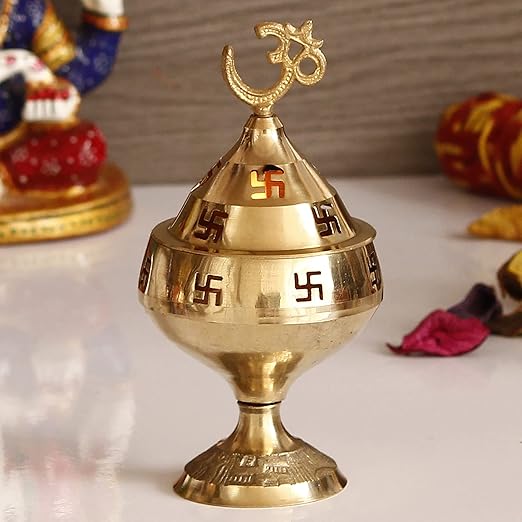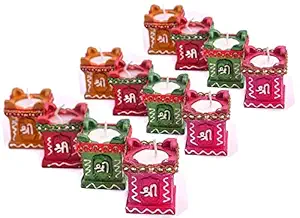छोटी छोटी गैया, छोटे छोटे ग्वाल ।
छोटो सो मेरो मदन गोपाल ॥
छोटी छोटी गैया, छोटे छोटे ग्वाल ।
छोटो सो मेरो मदन गोपाल ॥आगे आगे गैया पीछे पीछे ग्वाल ।
बीच में मेरो मदन गोपाल ॥
छोटी छोटी गैया, छोटे छोटे ग्वाल ।
छोटो सो मेरो मदन गोपाल ॥
कारी कारी गैया, गोरे गोरे ग्वाल।
श्याम वरण मेरो मदन गोपाल॥
छोटी छोटी गैया, छोटे छोटे ग्वाल ।
छोटो सो मेरो मदन गोपाल ॥
घास खाए गैया, दूध पीवे ग्वाल ।
माखन खावे मेरो मदन गोपाल ॥
छोटी छोटी गैया, छोटे छोटे ग्वाल ।
छोटो सो मेरो मदन गोपाल ॥
छोटी छोटी लकुटी, छोले छोटे हाथ ।
बंसी बजावे मेरो मदन गोपाल ॥
छोटी छोटी गैया, छोटे छोटे ग्वाल ।
छोटो सो मेरो मदन गोपाल ॥
छोटी छोटी सखियाँ, मधुबन बाग ।
रास राचावे मेरो मदन गोपाल ॥
छोटी छोटी गैया, छोटे छोटे ग्वाल ।
छोटो सो मेरो मदन गोपाल ॥
छोटी छोटी गैया, छोटे छोटे ग्वाल ।
छोटो सो मेरो मदन गोपाल ॥
Overview of "Chhoti Chhoti Gaiya Chhote Chhote Gwal"
Title & Meaning
'Chhoti Chhoti Gaiya Chhote Chhote Gwal' is a playful and devotional Krishna bhajan highlighting the childhood pastimes of Krishna with cows and cowherds.
Artist & Recording Details
Performed by popular bhajan singers and often recorded in devotional albums and live temple sessions.
Genre & Occasion
A Krishna devotional bhajan, typically sung during Janmashtami, morning/evening aartis, and religious gatherings.
Language & Dialect
Lyrics are primarily in Hindi and Braj Bhasha, capturing the regional flavor and devotional tone.
Popularity & Versions
Widely sung in temples, bhajan sessions, and cultural programs; multiple live and recorded versions exist.
Lyrics Structure & Themes
Devotional Invocation
The bhajan opens by praising Krishna and depicting his childhood charm, inviting devotees into joyful devotion.
Repetitive Chorus
Refrains are repeated to engage the congregation and enhance the devotional atmosphere.
Imagery & Symbolism
Describes cows, gopis, and Krishna’s playful activities symbolizing innocence, joy, and divine love.
Community & Togetherness
Encourages group singing and shared devotional experiences among devotees.
Emotional Resonance
Evokes delight, nostalgia, and devotion, making listeners feel close to Krishna’s childhood pastimes.
Musical & Performance Elements
Instrumentation & Rhythm
Instruments like harmonium, dholak, tabla, manjira, and flute complement the bhajan's playful and rhythmic tone.
Tempo & Dynamics
Moderate tempo, with dynamic rises during choruses to reflect playful and joyful themes.
Live vs Studio Renditions
Live performances often have extended verses and audience interaction, while studio versions are concise and polished.
Dance Cues & Movements
Devotees may perform swaying, clapping, or light foot movements to reflect the rhythm and joyous mood.
Audience Participation
Invites all devotees to sing along, enhancing engagement and creating a lively bhajan session.
Festival & Cultural Significance
Krishna Janmashtami Connection
Sung widely during Janmashtami to celebrate Krishna’s birth and childhood, emphasizing devotion and festivity.
Spiritual Meaning
Highlights the innocence, joy, and divine love of Krishna, fostering bhakti and spiritual connection among devotees.
Preservation of Bhakti Tradition
Helps maintain the traditional practice of singing Krishna bhajans and teaching devotional values to future generations.
Community Bonding
Brings communities together for collective singing, celebration, and shared devotional joy.
Joyful Devotion
Instills happiness, spiritual delight, and a sense of togetherness through communal bhajan sessions.
How to Use & Share
Translations & Transliteration
Provide translations and transliterations for non-Hindi speakers to fully understand and participate in the bhajan.
Audio / Video Embeds
Embed live or recorded performances to engage users and enhance the devotional experience.
Printable Lyrics & PDF Downloads
Offer lyrics in printable PDF format for personal devotion or community bhajan gatherings.
Performance & Singing Tips
Provide guidance on melody, rhythm, and pronunciation to enhance devotional singing accuracy.
SEO & Social Media
Optimize with keywords like Chhoti Chhoti Gaiya, Krishna Bhajan, Janmashtami Bhajan; include social sharing buttons.
'Chhoti Chhoti Gaiya Chhote Chhote Gwal' is a playful and devotional Krishna bhajan highlighting the childhood pastimes of Krishna with cows and cowherds.
Performed by popular bhajan singers and often recorded in devotional albums and live temple sessions.
A Krishna devotional bhajan, typically sung during Janmashtami, morning/evening aartis, and religious gatherings.
Lyrics are primarily in Hindi and Braj Bhasha, capturing the regional flavor and devotional tone.
Widely sung in temples, bhajan sessions, and cultural programs; multiple live and recorded versions exist.
The bhajan opens by praising Krishna and depicting his childhood charm, inviting devotees into joyful devotion.
Refrains are repeated to engage the congregation and enhance the devotional atmosphere.
Describes cows, gopis, and Krishna’s playful activities symbolizing innocence, joy, and divine love.
Encourages group singing and shared devotional experiences among devotees.
Evokes delight, nostalgia, and devotion, making listeners feel close to Krishna’s childhood pastimes.
Instruments like harmonium, dholak, tabla, manjira, and flute complement the bhajan's playful and rhythmic tone.
Moderate tempo, with dynamic rises during choruses to reflect playful and joyful themes.
Live performances often have extended verses and audience interaction, while studio versions are concise and polished.
Devotees may perform swaying, clapping, or light foot movements to reflect the rhythm and joyous mood.
Invites all devotees to sing along, enhancing engagement and creating a lively bhajan session.
Sung widely during Janmashtami to celebrate Krishna’s birth and childhood, emphasizing devotion and festivity.
Highlights the innocence, joy, and divine love of Krishna, fostering bhakti and spiritual connection among devotees.
Helps maintain the traditional practice of singing Krishna bhajans and teaching devotional values to future generations.
Brings communities together for collective singing, celebration, and shared devotional joy.
Instills happiness, spiritual delight, and a sense of togetherness through communal bhajan sessions.
Provide translations and transliterations for non-Hindi speakers to fully understand and participate in the bhajan.
Embed live or recorded performances to engage users and enhance the devotional experience.
Offer lyrics in printable PDF format for personal devotion or community bhajan gatherings.
Provide guidance on melody, rhythm, and pronunciation to enhance devotional singing accuracy.
Optimize with keywords like Chhoti Chhoti Gaiya, Krishna Bhajan, Janmashtami Bhajan; include social sharing buttons.


